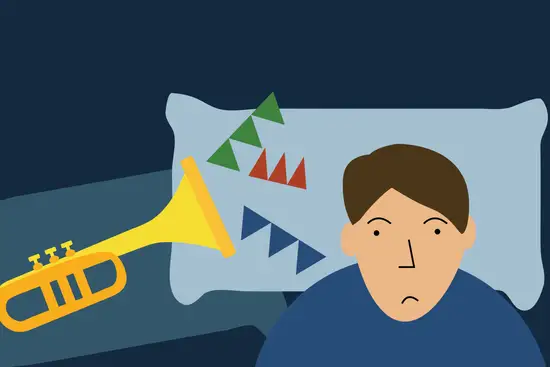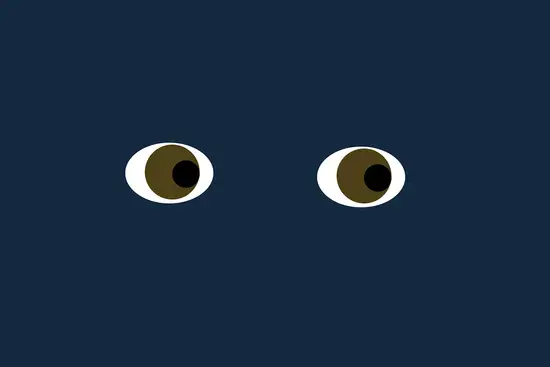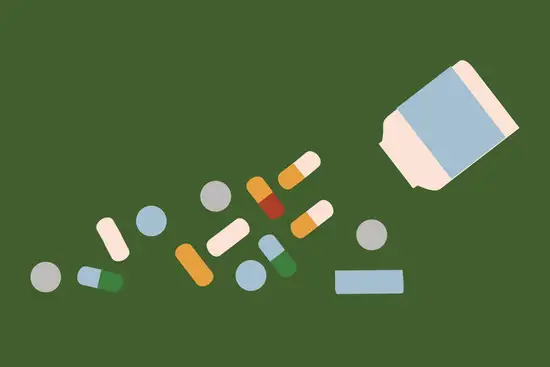Key points
Sleep apnea (or apnoea) is thought to affect nearly a billion people worldwide1 and incidence is rising. In this article, we’re going to explore the reasons for this and what you can do if you’re affected.
We’ll explain everything you need to know about sleep apnea, using science based facts and we’re going to cover:
- what causes sleep apnea
- sleep apnea symptoms
- types of sleep apnea
- treatment options for sleep apnea.
Sleep apnea affects around 1 in 8 people
In the simplest terms, sleep apnea is when your breathing repeatedly stops and starts during your sleep. It affects the quality of your sleep and can leave you feeling tired and unable to function during the day. It’s a disorder that’s on the rise and its incidence has skyrocketed over the past couple of decades.
According to the UK’s Sleep Apnoea Trust, 13% of men and 6% of women between the ages of 30-75 in the UK have sleep apnea.2 From their data, this equates to some 10 million people living with sleep apnea in the UK alone.
In the USA, estimates vary but at least 24 million people are thought to have sleep apnea which equates to around 14.5% of the population.1 Some sources put the figure much higher than this but incidence also differs according to sex and age making it hard to put a single value here.
Globally, it’s thought that almost a billion people aged between 30-69 are living with sleep apnea.1 The real figure is likely to be higher as people younger and older than this age range can, and do, experience sleep apnea too.
And while more and more people are being diagnosed with sleep apnea, there are many others who may be experiencing it every night when they sleep but don’t realise it. The tiredness and low energy that they’re feeling during the day may be down to undiagnosed sleep apnea.
So, why are as many people being diagnosed with sleep apnea? And how do so many people not realise they’re living with it?
In this article, we’re going to get to the bottom of what’s known about the rising levels of sleep apnea, how to spot the signs and what to do if you think you may be living with the effects of it. Let’s get started by looking at what we know about the different types of sleep apnea.
Sleep apnea can lead to insomnia
Do you have trouble falling asleep or staying asleep? Do you find yourself awake in the middle of the night but just can’t drop back off to sleep? You may be experiencing insomnia and we’re here to help. Take our short sleep quiz to see how Sleepstation can improve your sleep.
Classification of sleep apnea
There are three main types of sleep apnea:
- obstructive sleep apnea
- central sleep apnea
- mixed or complex sleep apnea.3
The most common form of sleep apnea is obstructive sleep apnea (OSA), complex sleep apnea is the next most prevalent and central sleep apnea (CSA) is the least common.
A study from 2006 estimated the figures at 84% for OSA, 15% for complex sleep apnea and only 0.4% for CSA.4
Obstructive sleep apnea (OSA)
OSA is the predominant type of sleep apnea so we’re going to focus on this form. According to the American Academy of Sleep Medicine (AASM), OSA is defined as:
A sleep-related breathing disorder that involves a decrease or complete halt in airflow despite an ongoing effort to breathe.5
With OSA, the cause is an obstruction in the throat. During sleep, muscles relax all throughout your body. For people experiencing OSA, this muscle relaxation causes the soft tissue in the back of the throat to collapse. This collapse then blocks your airway.
When this happens, either your breathing is reduced (this is called a hypopnea) or breathing pauses completely (this is called an apnea) for at least 10 seconds. Most pauses last for 10-30 seconds but can be around a minute or longer.5
During a pause, oxygen levels in your blood fall and your brain responds by alerting the body that something is up. You wake from sleep enough for your body to restore the normal breathing pattern and then you go back to sleep… until the next episode.
This can happen hundreds of times each night, but when you get up in the morning, you may have no idea that you’ve been doing this all night. This is because when your brain wakes you in the night, you’re not generally fully awake.
It’s mostly a brief arousal from sleep, just enough to allow your body to regulate the problem. Sometimes, a person might wake from an apnea because they’ve choked, gasped or jerked in their sleep, but it’s not always the case.
Central sleep apnea (CSA)
CSA is when you stop breathing regularly during your sleep because your brain isn’t telling your body to take in air. Signals between your brain and the muscles that control breathing aren’t sent correctly and so you have a pause in breathing (an apnea).
This type of sleep apnea is most commonly associated with serious illnesses, particularly those that affect the brain. It’s also seen in people sleeping at high altitude or with certain medications, such as opioids6 and in young babies whose respiratory system may not be fully developed.3
Complex or mixed sleep apnea
Complex or mixed sleep apnea is a combination of CSA and OSA. With this form there are episodes of apnea caused by obstruction, which is classic to OSA, but also repeated pauses in breathing (more than five in an hour) which aren’t caused by obstruction, so are more CSA in type.7
You may not even realise you have sleep apnea
As we mentioned earlier, some people may awaken temporarily from sleep when they experience a pause in breathing, but many people won’t even know it’s happened. So how can you tell if you have sleep apnea, if you don’t even know that you’re doing it?
Sometimes it’s the bed partner of the person with sleep apnea who alerts them that they’ve been snoring, choking or pausing in breathing.
Sleeping with someone who has OSA can really impact on your sleep, so being told, “You were snoring again last night!” can be a first sign of sleep apnea.
If your bed partner notices that you repeatedly stop breathing during the night, you should see your GP.
But snoring doesn’t always mean sleep apnea. Plus, not everyone will be woken by their partner’s OSA and plenty of people don’t share a bed. So how do you spot sleep apnea in these instances? Let’s explore this next.
What are the symptoms of sleep apnea?
Sleep apnea symptoms that occur during sleep can include:
- your breathing stopping and starting
- making gasping, snorting or choking noises
- snoring loudly
- waking up a lot.8
Snoring is more prominent in OSA than CSA, but it can occur in all types of sleep apnea. In OSA, you may feel like you’re choking due to the obstruction in your throat. In CSA this wouldn’t be the case, but you can still wake up gasping for air.
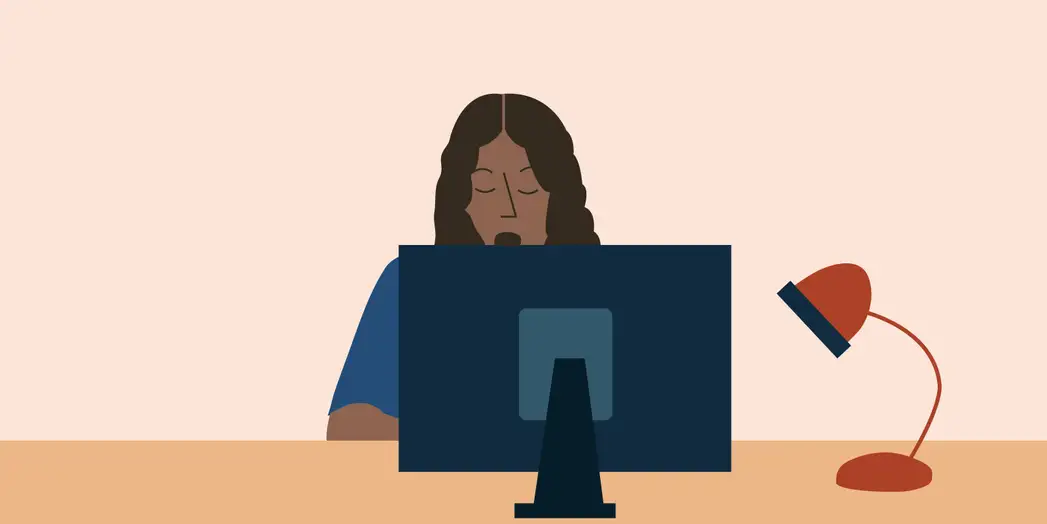
Sleep apnea also has symptoms that can affect your daytime functioning and your wellbeing. Because it disrupts your sleep, you may not feel at your best when you wake.
Daytime sleep apnea symptoms can include:
- having difficulty concentrating
- changes to your mood
- having a headache when you wake up
- feeling very tired
- falling asleep at times when you don’t necessarily want to (for example at work)
- having difficulty getting to sleep or staying asleep (insomnia).5 8
It’s often the daytime symptoms that alert a person with sleep apnea to the problem and, because these aren’t occurring at night, you may not link them to being part of a sleep disorder. In fact, the AASM states that 80-90% of adults with OSA go undiagnosed.5
Measuring sleep apnea severity
Severity of sleep apnea is measured on a scale called the Apnea-Hypopnea Index (AHI). This scale measures how many pauses in breathing, whether fully (apnea) or partially (hypopnea) are occurring over the course of sleeping.
It’s a numerical scale from 0-30 and is calculated by dividing how many events occurred while you were sleeping by how many hours you slept for. There are four categories of increasing severity:
- Normal: less than five events
- Mild: at least five but less than 15 events (5-14)
- Moderate: at least 15 but less than 30 events (15-29)
- Severe: 30 or more events.
This test can be carried out at home, using a sleep monitor your doctor provides you with, or it can be performed in a sleep study, where you stay the night at a sleep lab and your sleep is analysed. If it’s carried out at home, it will be a more simplified test than at a sleep lab.
Either way, you’ll get a measure of whether you have sleep apnea and where on the scale your particular case falls.
What causes sleep apnea?
The incidence of OSA has increased substantially over the past few decades and it’s believed to be heavily linked to the obesity crisis. The results of one well-respected sleep study suggested that 41% of OSA in adults were linked to being overweight or obese.9 They also found that 58% of those in the moderate-to-severe category were overweight or obese.
Excessive weight is considered to be the major predisposing factor for sleep apnea. But what’s the link here? Why does carrying extra weight make you more at risk of OSA?
With obesity, fat deposits in the upper airways narrow the airway itself.10 The muscles that hold the airway open can also become overburdened trying to keep it open. This causes the airway to collapse under the strain.11
So when a person is overweight or obese, the narrowed airway and weakened muscles lead to airway collapse and apneas.
Although it’s the main factor thought to lead to OSA, excess weight is not the only one. Quite a few risk factors have been identified for OSA, including:
- being overweight (BMI 25 to 29.9) or obese (BMI of 30 or more)
- larger neck size in both men and women
- being male sex
- having Down syndrome
- large tonsils and adenoids, especially children and young adults
- having a family member with OSA
- endocrine disorders such as hypothyroidism and acromegaly
- being a smoker
- using alcohol or sedatives
- increasing age
- being postmenopausal
- having nasal congestion at night, whether due to allergies or abnormalities in the structure of the nose, or both.6 12
Can you die from sleep apnea?
Obstructive sleep apnea increases your risk of dying, but can sleep apnea kill you? These aren’t the same thing. Dying in your sleep from sleep apnea itself is very unlikely because your body has excellent mechanisms for waking you up and making you breathe again. Hooray!
That being said, the risk of sudden adult death in someone with OSA is thought to be around double that of someone without the disorder.9 Having OSA also puts a person at a two-fold higher risk of death from cardiovascular events (such as heart attack, stroke or heart failure).
Overall, people with OSA are at higher risk of death from all causes because it increases your risk of developing other health issues. Left untreated, OSA can increase your risk of:
Why does sleep apnea increase these risks? During episodes of apnea, your body is starved of oxygen and this increases stress levels in the body. This doesn’t mean you feel stressed out. We’re talking about cellular stress.
This is a normal process in cells, which allows for the removal of damaged cells and protects your body as whole. But when the stress response is triggered over and over by apneas, it can become a bad thing.
When levels of cellular stress remain high, this can lead to chronic inflammation in your body and eventually your body becomes at an increased risk of developing things like cancer, diabetes and heart disease.
Additionally, OSA disrupts your sleep and it’s well established that our sleep and our health are heavily intertwined. Sleep is important for mental and physical rest, recuperation and repair so when you don’t get the sleep your body needs, your mind and body take the hit.
Without adequate sleep, your mental health can be affected. You may feel increased stress, anxiety and depression and you may notice mood changes. It can also affect you physically, whether you experience fatigue, a difficulty going about your daily tasks or a general lack of energy.
This is why when sleep is being regularly disturbed by sleep apnea, many of your symptoms affect your daily life. It’s also known that sleep apnea is associated with an increased risk of traffic accidents, likely because it can cause excessive daytime sleepiness.17
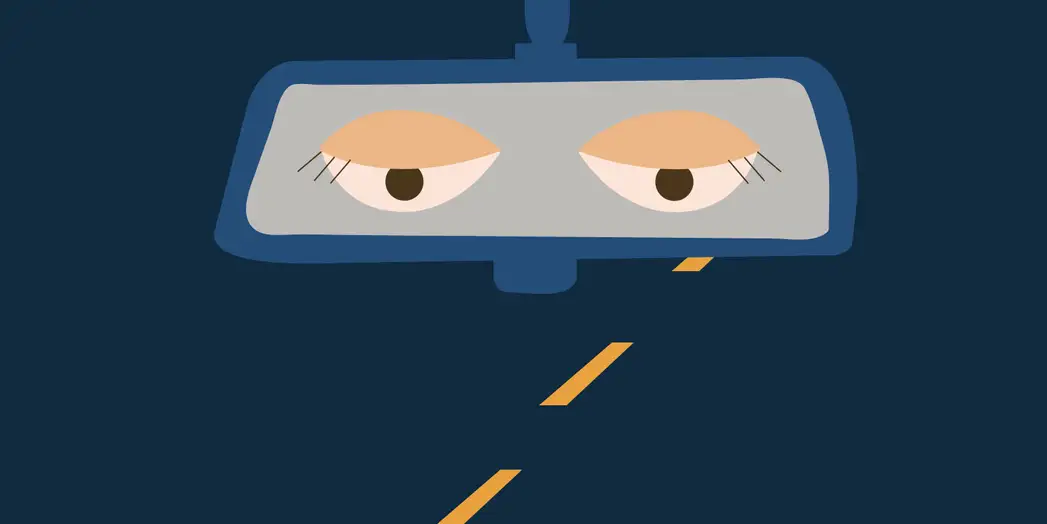
In fact, in the UK, a diagnosis of OSA may mean you’re legally obliged to inform the DVLA because there’s a risk that daytime drowsiness can interfere with your ability to drive. You can find further information about the rules on driving with OSA on the DVLA website.
In the USA rules differ by state, but a diagnosis of OSA can mean you can’t drive a commercial motor vehicle. If you’re diagnosed with OSA, this is something you should discuss with your healthcare provider.
It’s clear that untreated OSA has the potential to massively impact your life and can hugely affect your mental and physical wellbeing, potentially increasing your risk of many serious illnesses.
So if you think you or a bed partner are experiencing sleep apnea, you shouldn’t ignore the symptoms. There are many different treatment options, so it’s worth discussing with your healthcare provider.
But how exactly do you treat sleep apnea? Let’s explore that now.
Treatments for sleep apnea
Thankfully, there are some very effective treatment options for sleep apnea which can greatly reduce the symptoms and improve your sleep. Common treatments include:
- continuous positive airways pressure (CPAP)
- weight loss
- surgery
- orthodontic devices.
We’ll cover each of these in some detail next. There are other experimental treatments, including drugs to suppress appetite, but these are still in clinical trial phase, so we don’t yet know how effective they could be.
In the USA, the Food and Drug Administration (FDA) has approved the drug modafinil as a treatment for OSA, under certain conditions.18 It’s not used across Europe as the European Medicines Agency (EMA) found risks associated with the drug outweighed its benefits.
Continuous positive airways pressure (CPAP)
A CPAP machine is a device that prevents your airway from closing while you sleep and is considered the gold standard and most effective treatment option for moderate to severe sleep apnea. CPAP is considered the gold standard treatment for OSA.19
A CPAP machine works by delivering a continuous supply of compressed air through a mask that you wear either over your nose or nose and mouth. This pressurised air keeps your airway open, so you have fewer episodes of apnea and your sleep is less disturbed.
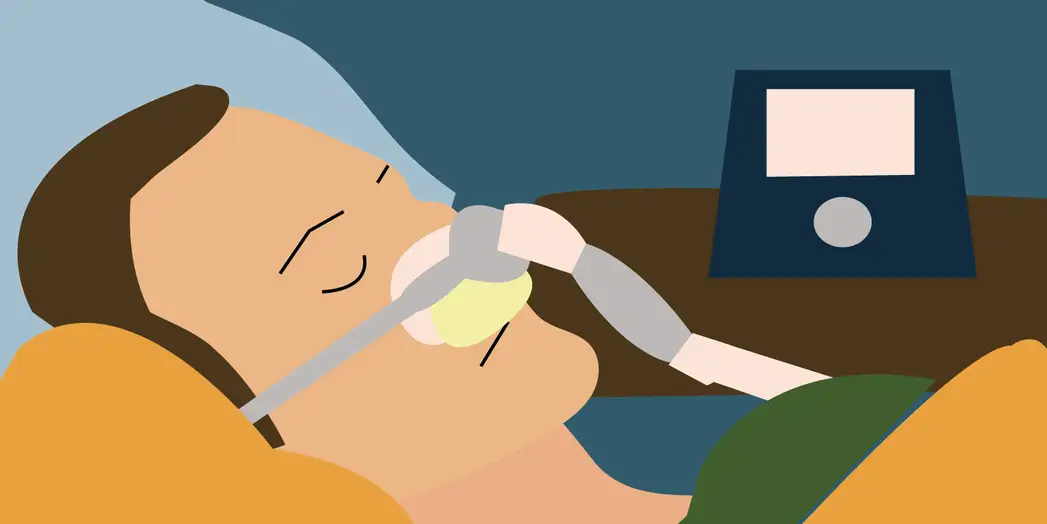
CPAP can be incredibly effective at controlling and resolving OSA and has around an 80% success rate. It may effectively resolve your symptoms for as long as you continue to use the machine, but it doesn’t cure the underlying cause.
Unfortunately, CPAP also has a high drop-out rate.20 One reason for this is that people dislike wearing the mask that’s needed for CPAP. No one really enjoys trying to sleep with a mask uncomfortably wrapped around their face.
To address this, masks are available in a huge range of different styles. Some cover the whole face, others your nose and mouth, or simply your nose. Some are made for side sleepers too, so there’s a lot of variety to choose from.
Some people find that the flow of air can dry out their mouth, throat or nasal passages. This can be resolved by adding a humidifier to the CPAP machine. If the air is too cold, there’re solutions available to heat up the air in the form of a heated humidifier.
The key point here is that if you’re having difficulty with your CPAP therapy, then don’t stay quiet. Your sleep clinic or doctor will likely be able to help make the experience more comfortable and so increase your chances of continuing with CPAP.
The British Lung Foundation website has an extensive CPAP troubleshooting page that may be helpful if you’re encountering difficulties with your CPAP machine or the therapy in general.
Orthodontic devices
A mandibular advancement device (MAD) is another option that can help your OSA. These look like a gum shield and they work by bringing your lower jaw forward which allows your airway to stay open. These are effective for mild to moderate OSA21 and can be helpful for people with severe OSA who can’t tolerate CPAP.20
There are simple and inexpensive MAD kits that you can buy from a pharmacy or online which consist of a gumshield that you heat up and then mould to fit the bite of your teeth. You can also have a custom MAD made by a dentist, orthodontist or other healthcare professional.
For the custom version, your MAD will be moulded to your teeth, so impressions will be made of your top and bottom teeth, and these are used to create the device. You put your device in when you go to sleep and remove it when you wake.
These types of devices require that your teeth and gums are in good condition and free of damage, gum disease and decay. This is because wearing a device like this can make dental problems worse, so you will need to see a dentist before getting a MAD.
Positional therapy
For mild sleep apnea, simple treatment options involving changing sleeping position may help relieve symptoms. There’re several different approaches to positional therapy, but the common theme is that they all use methods to prevent you from rolling onto your back.
It can be as simple as sleeping propped with a body pillow or wearing a t-shirt with tennis balls woven into the back of it.14 You can also buy different types of bands that are worn on your wrist, neck or around the waist and vibrate to rouse you if you roll onto your back.22
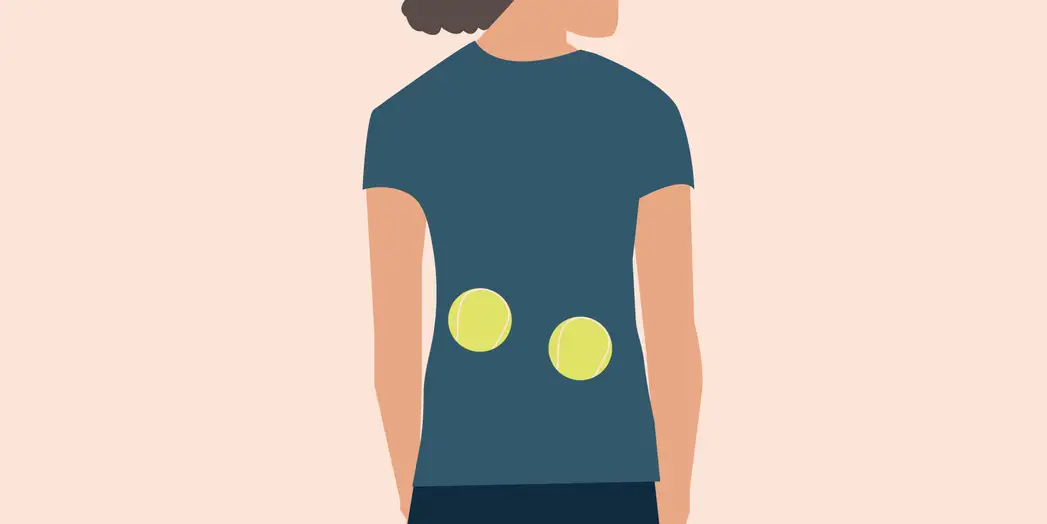
Weight-loss
As we’ve already discussed above, the increased incidence of sleep apnea is thought to be heavily influenced by the obesity crisis.
So one recommendation to improve symptoms of sleep apnea is to take control of your weight.10 This goes both ways ― poor sleep is known to lead to increased appetite, poor food choices and weight gain. Increased weight is known to be a risk factor for sleep apnea. Which then causes poor sleep…
Likewise, taking care of one should have a positive impact on the other. If you take steps to reduce your weight, you can improve your symptoms of sleep apnea and this should improve your sleep. Good sleep helps to regulate appetite and weight. Perfect!
In fact, studies have shown that reducing weight can effectively reduce OSA severity. One study in particular showed that loss of 10% body weight reduced the value on the AHI scale by 26%.11 For example, this would be the same as going from an AHI value of 15 (moderate) to 11 (mild).
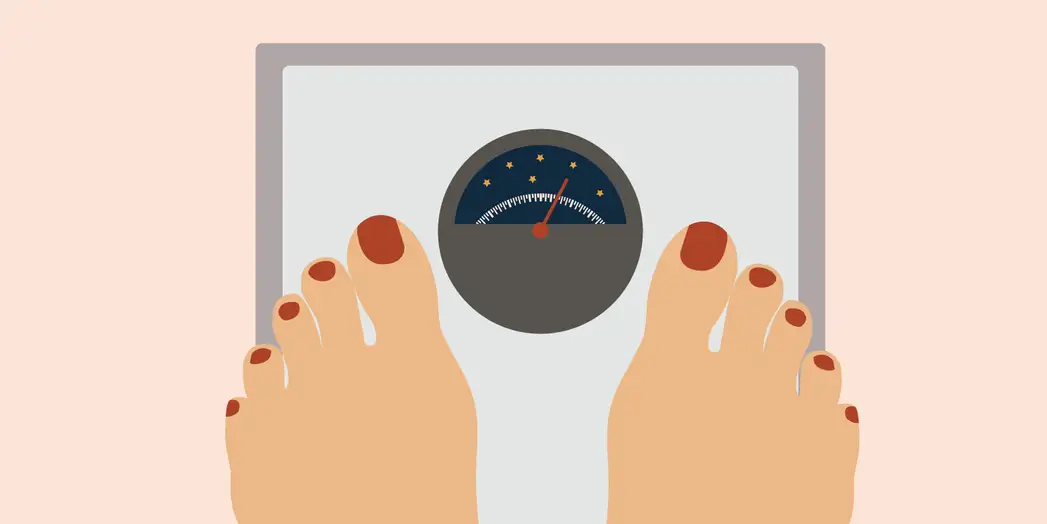
How the person with OSA chooses to lose weight will depend on their situation and how much weight is to be lost, but studied methods include:
- dietary changes
- lifestyle changes to incorporate more exercise
- behavioural therapies, such as Cognitive Behavioural Therapy (CBT)
- weight loss surgery.
Dietary changes can include more than just controlling calories. Avoiding alcohol, especially in the evening, can be beneficial as alcohol can contribute to the airway collapse that happens in OSA and it can make a person less easy to arouse when an apnea does occur.19
Exercise has a double benefit for people with sleep apnea. Exercise promotes sleep, so by incorporating exercise into your daily life, you not only get fitter and shed excess weight, you also increase your drive to sleep, making it easier to fall asleep when you go to bed at night.
Studies have looked at whether counselling can help OSA either in combination with exercise and dietary changes or on its own and results have been mixed.14 While some studies have shown a positive impact of therapy, others have failed to see any.
Surgery
Surgery can include bariatric surgery to aid weight loss and so improve symptoms of OSA. According to National Institute for Health and Clinical Excellence guidelines, bariatric surgery should only be recommended for people with a BMI of 40 or higher.10
If a person has other significant health issues such as diabetes of high blood pressure, then the same guidelines state that surgery should be performed if the person has a BMI between 35 and 40.
Weight-loss interventions should be tried for at least six months before bariatric surgery. The person undergoing the surgery also needs to be willing and able to commit to long-term follow up to ensure they can adhere to the required dietary changes after surgery.
So this isn’t an option to be taken lightly and isn’t something that will be suitable for a lot of people with OSA. However, for suitable candidates, it can be highly effective in reducing or even totally resolving symptoms of OSA.11
Surgery may also be considered if you have very large tonsils (tonsillectomy) or adenoids (adenoidectomy) and a BMI of less than 35. This is because large tonsils can block the opening of your throat as you sleep. Similarly, nasal surgery may be an option to straighten the nasal passages (septoplasty).
The most common surgery for OSA is uvulopalatopharyngoplasty (UPPP)23 which involves removing the tonsils and uvula and taking out extra tissue in the throat. It aims to open up the airway to allow for easier breathing and less chance of airway collapse.
Sleep apnea and insomnia
People with sleep apnea often also experience insomnia.24 In fact, OSA and insomnia are seen together so frequently that researchers have looked at how the two affect each other and which one may be causing the other.24 25 26
OSA can affect a person’s ability to fall asleep because they know that, when they do fall asleep, they’ll experience breathing problems. This can set up an association in their brain that falling asleep is bad.
When this happens, it becomes difficult to fall asleep and if this happens night after night it can become insomnia. In one study, over half of people with OSA experienced difficulty maintaining sleep, which is another feature of insomnia.25
If you think you’re experiencing insomnia, we’ve got a wealth of information on ways to help you get to sleep and stay asleep. Even with a treatment plan in place for your sleep apnea, there’re many simple ways to improve your overall sleep.
Your lifestyle and sleep environment both influence how well you sleep, so you could start by looking at your daily routine. Ask yourself these simple questions:
- Are you spending any time outside, in natural light, each day?
- Do you exercise or could you add in a little regular activity to your day?
- How is your mental health?
- What do your mealtimes look like? Do you eat late, drink coffee or enjoy a nightcap?
All of these factors can influence how well you sleep and they all involve small changes that can have big effects on your sleep. For instance, spending at least some time outside each day, the best time being during morning light, can help to regulate your body clock.
Regular exercise is great for your sleep drive ― helping you to feel tired when bedtime rolls round. Exercise can also boost your mood and it’s well known that how we feel influences sleep. Mental health and sleep go hand in hand, so taking care of one can have benefits for the other.
Managing stress, anxiety and depression can lead to improved sleep. If your thoughts and emotions are coming between you and sleep, thought blocking techniques could be just what you need to relax enough to sleep.
Another great way to unwind and prepare for sleep is to create a wind-down routine. Take an evening bath, read a book, do a puzzle. Your evening routine can include whatever you wish, the key is to keep it consistent each night.
Consistency helps to create a link between the routine and sleep time approaching. So after a few nights, your brain and body will begin to relax and feel sleepy as you go through your wind-down routine. Finally, when you go to bed, you should easily fall asleep.
Next, look at your environment. Is your bedroom dark and quiet? What temperature are you sleeping at? Do you watch a screen at night or in bed? All of these are important considerations for creating an ideal bedroom setup.
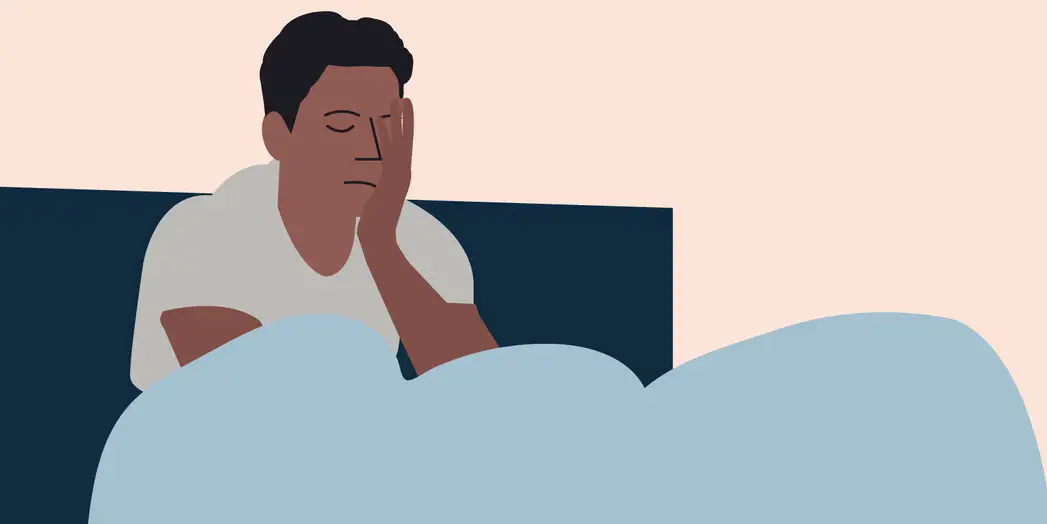
Simple changes can have profound effects on your sleep, but if you’re living with sleep apnea, don’t think you need to also live with the symptoms of insomnia. If you’re experiencing insomnia because you have sleep apnea or even because you sleep with someone who has sleep apnea, we may be able to help you.
Our sleep improvement programme uses Cognitive Behavioural Therapy for insomnia (CBTi), which is not only the gold standard treatment for insomnia, it’s also been shown to be very effective for improving sleep in people with sleep apnea.27 28 29
In fact, CBTi has been shown to improve sleep in people with sleep apnea who are already being treated with CPAP29 so even if you’re receiving treatment for OSA, we might be able to help you to improve your sleep.
Start your journey to better sleep today by taking our short sleep questionnaire and see if the Sleepstation programme could be just what you need to get back to sleeping well.
Summary
- Obstructive sleep apnea (OSA) is a disorder in which you stop and start breathing while asleep.
- The incidence of OSA across the globe has been climbing over the past two decades, probably due to rising obesity levels.
- If you think you or your sleep partner is experiencing OSA, you should discuss it with your healthcare provider as sleep apnea can negatively affect overall health as well as your sleep.
- People with OSA often report experiencing insomnia, and their bed partners may also be at higher risk of developing insomnia.
- Happily, there’s many different treatment options available to control or improve symptoms of OSA.
- If you or your sleep partner are concerned that you have insomnia, Sleepstation may be able to help you to regain control of your sleep.
References
- Benjafield AV, Ayas NT, Eastwood PR, Heinzer R, Ip MSM, Morrell MJ, et al. Estimation of the global prevalence and burden of obstructive sleep apnoea: a literature-based analysis. Lancet Respir Med. 2019;7(8):687–98. ↩︎
- Research. The Sleep Apnoea Trust. 2020 [cited 2022 Jul 8]. Available here. ↩︎
- Kondamudi NP, Krata L, Wilt AS. Infant Apnea. In: StatPearls. StatPearls Publishing; 2022. ↩︎
- Morgenthaler TI, Kagramanov V, Hanak V, Decker PA. Complex sleep apnea syndrome: is it a unique clinical syndrome? Sleep. 2006;29(9):1203–9. ↩︎
- Obstructive Sleep Apnea [Internet]. Aasm.org. [cited 2022 Jul 1]. Available here. ↩︎
- Roberts EG, Raphelson JR, Orr JE, LaBuzetta JN, Malhotra A. The pathogenesis of central and complex sleep apnea. Curr Neurol Neurosci Rep. 2022;22(7):405–12. ↩︎
- Khan MT, Franco RA. Complex sleep apnea syndrome. Sleep Disord. 2014;2014:798487. ↩︎
- Sleep apnoea [Internet]. nhs.uk. [cited 2022 Jul 1]. Available here. ↩︎
- Young T, Peppard PE, Taheri S. Excess weight and sleep-disordered breathing. J Appl Physiol 2005;99:1592–9. ↩︎
- Jehan S, Zizi F, Pandi-Perumal SR, Wall S, Auguste E, Myers AK, et al. Obstructive sleep apnea and obesity: Implications for public health. Sleep Med Disord. 2017;1(4) ↩︎
- Cowan DC, Livingston E. Obstructive sleep apnoea syndrome and weight loss: review. Sleep Disord. 2012;2012:163296. ↩︎
- Johnson KG, Johnson DC, Thomas RJ, Rastegar V, Visintainer P. Cardiovascular and somatic comorbidities and sleep measures using three hypopnea criteria in mild obstructive sleep-disordered breathing: sex, age and body mass index differences in a retrospective sleep clinic cohort. J Clin Sleep Med. 2020 ↩︎
- Heilbrunn ES, Ssentongo P, Chinchilli VM, Oh J, Ssentongo AE. Sudden death in individuals with obstructive sleep apnoea: a systematic review and meta-analysis. BMJ Open Respir Res. 2021;8(1):e000656. ↩︎
- Park JG, Ramar K, Olson EJ. Updates on definition, consequences, and management of obstructive sleep apnea. Mayo Clin Proc. 2011;86(6):549–54; quiz 554–5 ↩︎
- Gozal D, Ham SA, Mokhlesi B. Sleep apnea and cancer: Analysis of a nationwide population sample. Sleep. 2016;39(8):1493–500. ↩︎
- Cao Y, Ning P, Li Q, Wu S. Cancer and obstructive sleep apnea: An updated meta-analysis. Medicine (Baltimore). 2022;101(10):e28930.. ↩︎
- Findley LJ, Suratt PM. Serious motor vehicle crashes: the cost of untreated sleep apnoea. Thorax. 2001;56(7):505–505. ↩︎
- Schwartz JRL. Modafinil in the treatment of excessive sleepiness. Drug Des Devel Ther. 2009;2:71–85. ↩︎
- Spicuzza L, Caruso D, Di Maria G. Obstructive sleep apnoea syndrome and its management. Ther Adv Chronic Dis. 2015;6(5):273–85. ↩︎
- Liu H-W, Chen Y-J, Lai Y-C, Huang C-Y, Huang Y-L, Lin M-T, et al. Combining MAD and CPAP as an effective strategy for treating patients with severe sleep apnea intolerant to high-pressure PAP and unresponsive to MAD. PLoS One. 2017;12(10):e0187032. ↩︎
- Treatment for OSA [Internet]. Asthma + Lung UK. 2015 [cited 2022 Jul 1]. Available here. ↩︎
- de Vries GE, Hoekema A, Doff MHJ, Kerstjens HAM, Meijer PM, van der Hoeven JH, et al. Usage of positional therapy in adults with obstructive sleep apnea. J Clin Sleep Med. 2015;11(2):131–7. ↩︎
- Khan A, Ramar K, Maddirala S, Friedman O, Pallanch JF, Olson EJ. Uvulopalatopharyngoplasty in the management of obstructive sleep apnea: the mayo clinic experience. Mayo Clin Proc. 2009;84(9):795–800. ↩︎
- Björnsdóttir E, Janson C, Gíslason T, Sigurdsson JF, Pack AI, Gehrman P, et al. Insomnia in untreated sleep apnea patients compared to controls: Insomnia and sleep apnea. J Sleep Res. 2012;21(2):131–8. ↩︎
- Mendes MS, dos Santos JM. Insomnia as an expression of obstructive sleep apnea syndrome–the effect of treatment with nocturnal ventilatory support. Rev Port Pneumol (2006). 2015;21(4):203–8. ↩︎
- Janssen HCJP, Venekamp LN, Peeters GAM, Pijpers A, Pevernagie DAA. Management of insomnia in sleep disordered breathing. Eur Respir Rev. 2019;28(153):190080. ↩︎
- Sweetman A, Lack L, McEvoy RD, Antic NA, Smith S, Chai-Coetzer CL et al. Cognitive behavioural therapy for insomnia reduces sleep apnoea severity: a randomised controlled trial. ERJ Open Res 2020; 6: 00161–02020. ↩︎
- Sweetman A, McEvoy RD, Smith S, Catcheside PG, Antic NA, Chai-Coetzer CL et al. The effect of cognitive and behavioral therapy for insomnia on week-to-week changes in sleepiness and sleep parameters in patients with comorbid insomnia and sleep apnea: a randomized controlled trial. Sleep 2020; 43. ↩︎
- Ong JC, Crawford MR, Dawson SC, Fogg LF, Turner AD, Wyatt JK et al. A randomized controlled trial of CBT-I and PAP for obstructive sleep apnea and comorbid insomnia: main outcomes from the MATRICS study. Sleep 2020; 43. doi:10.1093/sleep/zsaa041. ↩︎
